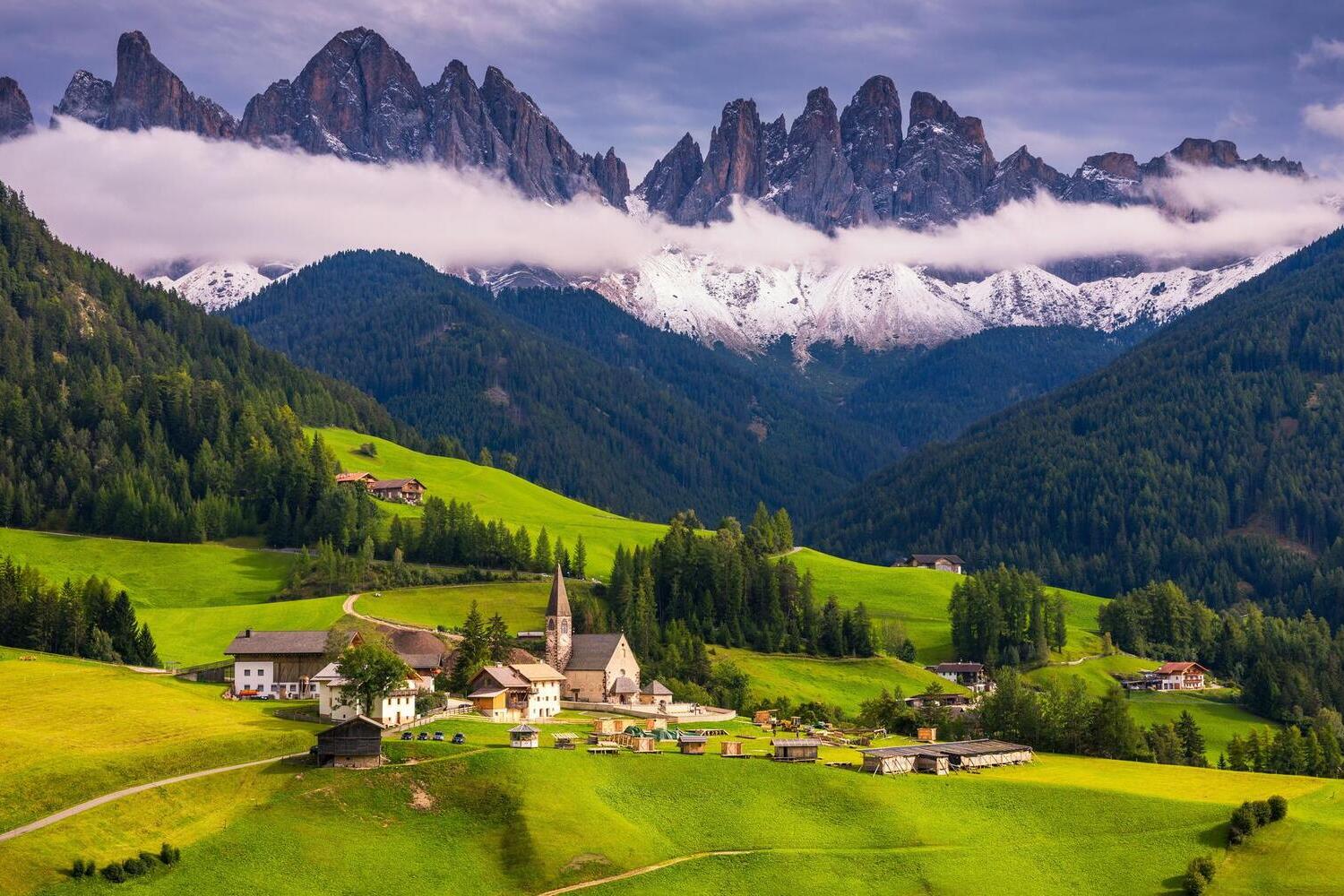Trentino-Alto Adige is a region in northern Italy where Italian and Austrian cultures meet, stunning Dolomite landscapes unfold, and culinary traditions take on a unique character. It consists of two historical provinces: Trentino, with its capital in Trento, and South Tyrol, with its capital in Bolzano. This is one of the most distinctive regions in Italy, known for its linguistic, religious, architectural, and natural diversity. Here are some interesting and little-known facts about Trentino-Alto Adige that will help you better understand this extraordinary part of Europe.
- Trentino-Alto Adige is one of five autonomous regions in Italy. Its autonomy grants it extended powers in areas such as education, culture, language, and local governance, helping to preserve its ethnic and cultural identity.
- The region officially recognizes three languages: Italian, German, and Ladin. In South Tyrol, the majority of the population speaks German, while in some municipalities Ladin, a language of Rhaeto-Romance origin, is still spoken.
- The city of Trento was the site of the Council of Trent, held from 1545 to 1563. This council played a central role in the Counter-Reformation and permanently shaped the structure of the Catholic Church.
- Bolzano is considered the gateway to the Alps and is known for having one of the highest qualities of life in Italy. It combines Italian aesthetics with German organization, creating a unique atmosphere.
- The region is home to the Dolomite Mountains, which are listed as a UNESCO World Heritage Site. It is one of the best places in the world for hiking, climbing, and winter sports.
- There are more than 300 castles and fortresses across Trentino-Alto Adige. Notable examples include Tyrol Castle, Roncolo Castle, and Beseno Castle, each with its own history and architectural style.
- The local cuisine differs from traditional Italian fare. Popular dishes include spätzle, dumplings, cabbage salads, strudels, sausages with sauerkraut, and regional cheeses.
- Winemaking is an important part of the region’s economy. Vineyards are cultivated in mountainous terrain, and the area is renowned for producing some of Italy’s best white wines.
- South Tyrol is the wealthiest region in Italy in terms of GDP per capita. Its economy is based on agriculture, tourism, crafts, and high-tech industries.
- The region has a highly developed cable car system. There are over 400 lifts in operation, serving skiers in winter and hikers and cyclists in summer.
- Trentino-Alto Adige is known for its strong environmental awareness. Many towns and villages are powered entirely by renewable energy sources, particularly hydroelectric power.
- In the town of Naturno stands the tallest church tower in South Tyrol — the bell tower of Saint Proculus Church. It dates back to the ninth century and is one of the oldest in all of Italy.
- The region hosts dozens of festivals, fairs, and agricultural exhibitions each year. Among the most popular are the Apple Festival in Vipiteno and the Cheese Festival in Cavalese.
- The South Tyrol Museum of Archaeology houses the famous mummy of Ötzi the Iceman. Discovered in 1991 in the Ötztal Alps, he is one of the oldest naturally preserved human mummies in the world.
- The region is known for its trilingual school system. Children are taught multiple languages from an early age, preparing them for life in a multilingual environment.
- Mountain huts, known as rifugi, are a vital part of the region’s tourism infrastructure. Located above 2,000 meters, they offer shelter and hospitality to hikers and climbers.
- Architecture in the region reflects a mix of styles, from Romanesque and Gothic to Alpine modernism. Many churches and town halls are decorated with frescoes, wood carvings, and historic clock towers.
- Trentino is a leader in the use of electric bicycles. Hundreds of kilometers of bike paths are equipped with charging stations, making the region ideal for eco-friendly tourism.
- Natural parks cover more than one-third of the region. Adamello-Brenta and Sesto are among the most famous, home to bears, deer, eagles, and a wide variety of alpine flora.
- In winter, the region becomes one of Europe’s largest ski destinations. Famous resorts include Madonna di Campiglio, Val Gardena, Kronplatz, and Cortina d’Ampezzo.
These fascinating facts about Trentino-Alto Adige reveal not only the beauty of its landscapes but also its cultural, linguistic, and ecological richness. The region proves that different peoples and traditions can coexist in harmony within a single administrative area. Its uniqueness lies not just in its castles and mountains but in its respect for heritage, commitment to sustainability, and vibrant local life. Trentino-Alto Adige is a true example of European diversity in unity.





